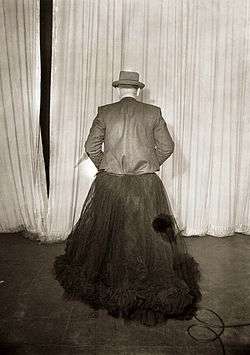Tivoli circuit

The Tivoli Circuit was a successful and popular Australian entertainment circuit which flourished from 1893 and the 1950s. The circuit suffered a catastrophic decline in popularity after the introduction of television in Australia in 1956, and the last Tivoli show was staged in 1966.
History
The circuit was established by English music hall comedian Harry Rickards in 1893, following the success of his "New Tivoli Minstrel and Grand Specialty Company" who performed at the old Opera House in Sydney in 1892. By 1909 Rickards had 532 people on the payroll.
The Circuit was taken over after Rickards' death in 1911 by a succession of managements The first was Hugh D. Mclntosh (in 1912), who purchased the circuit for £100,000. After success with large-scale stage productions such as Chu Chin Chow he sold the Tivoli circuit to Harry G. Musgrove in 1921. It was subsequently acquired by J.C. Williamson Tivoli Vaudeville Pty Ltd in 1924, then by Mike Connors and Queenie Paul (in the Great Depression years), Musgrove Theatres again in 1934 under Frank Neil and Wallace Parnell and, from 1944, David N. Martin, Managing Director of Tivoli Circuit of Australia.
The circuit acquired the former "Grand Opera House" at Sydney, which in 1932 was renamed the New Tivoli Theatre.
The Tivoli was the major outlet for variety theatre and vaudeville in Australia for over 70 years. The circuit grew to include Melbourne, Adelaide, Brisbane and Perth by the turn of the century, promoting both local and international musical, variety and comedy acts. It featured a broad spectrum of vaudeville acts including dancers, acrobats, comedians and ventriloquists and the Tivoli was famous for its scantily-clad chorus girls, who were colloquially known as "Tivoli tappers".
Legacy
Graeme Murphy directed and choreographed a dance musical Tivoli in 2001 paying tribute to the Tivoli circuit and its role in twentieth century Australian theatre, presented by Sydney Dance Company and The Australian Ballet.[1]
Currently, there is a theatre restaurant staging 1950s style variety shows in Malvern, Melbourne.
See also
- Roy Rene
- Tivoli Party Time - 1957 Melbourne television series featuring Tivoli acts
- Music hall - the equivalent in the United Kingdom
- Vaudeville - the equivalent in the United States
References and external links
Bentley, Paul (1999)
Australian Culture 1789-2000
http://www.twf.org.au/research/culturec.html
ABC website
Fool's Paradise - Comedy
http://fools.abc.net.au/essay/melbourne.htm
ketupa.net Denison, Sun and Associated Newspapers http://www.ketupa.net/associated.htm
References
- ↑ Sykes, Jill (20 February 2003). "Tivoli, Sydney Dance Company". Sydney Morning Herald. Retrieved 15 August 2016.